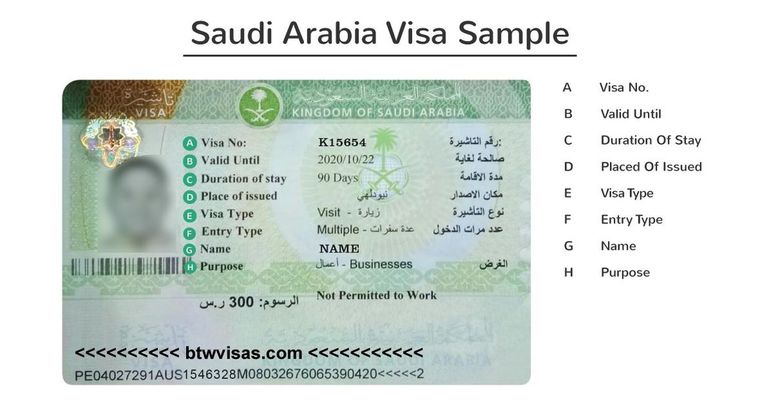How to apply visa for work in Saudi Arabia (Best for New Applicants)
How to apply visa for work in Saudi Arabia
Applying for a visa for work in Saudi Arabia can seem daunting at first, but with clear guidance and accurate information, the process can be smoothly navigated. This comprehensive, step-by-step guide outlines what you need to know—from eligibility and required documents to application procedures and post-arrival essentials. Alongside detailed explanations, you’ll find key official links and helpful tips to ensure a hassle-free experience.
1. Understand Visa Types
Saudi Arabia offers several relevant visa categories:
- Employment Visa (Iqama) – For long‑term work (1–2 years) via employer sponsorship.
- Temporary Work Visa – Ideal for short assignments or project-based contracts, typically valid up to 90 days (linkedin.com).
- Business Visit Visa – Suited for meetings, conferences or training—no full-time employment permitted .
Most expats will apply for the Employment Visa (Iqama), which grants both work and residency rights. Below, we focus on this pathway.



2. Eligibility & Sponsorship Requirements
- Registered employer: Saudi employers must be registered and request sponsorship through the Ministry of Human Resources (MHRSD) and Ministry of Foreign Affairs (MOFA) (globalization-partners.com, gulfvisaservices.com).
- Signed contract: Your employment contract should be signed and certified by the Saudi Chamber of Commerce and MOFA (globalization-partners.com).
- Qualifications: Diplomas, degrees, and professional credentials must be attested by the Saudi Cultural Mission and embassy of origin (gulfvisaservices.com). Some technical fields require passing a Saudi exam.
- Medical fitness: Mandatory clearance certificates for diseases like HIV, TB, hepatitis, and more (Read More).
- Background check: Submit a police clearance certificate less than 6 months old (See Details).
- Age & health: Typically between 21 – 60 years old; must pass a medical exam.
3. Documentation Checklist
For an Employment Visa, ensure you have the following (these may vary slightly by country), Must check complete checklist for apply visa for work in Saudi Arabia.
- Passport valid for ≥6 months with blank pages (globalization-partners.com)
- 2–4 recent passport photographs (white background) (foreignway.com)
- Completed visa application
- Proof of visa fee via Enjazit (MOFA’s visa portal) (globalization-partners.com)
- Employer’s sponsorship letter + contract, certified by Chamber of Commerce and MOFA (newsnow.pk)
- Attested educational certificates (Cultural Mission + Embassy) (globalization-partners.com)
- Medical report in triplicate + lab results (saudiembassy.net)
- Police clearance certificate (newsnow.pk)
- Technical exam results (if applicable)
- Biometric registration slips (from Etimad) (expatsksa.com)
4. Step-by-Step Application Process
Step 1: Employer Initiates
- Employer registers on MOFA and MHRSD systems.
- Applies for work permit + Visa Authorization Number (takes ~2 weeks).
Step 2: Compile Documents
- Ensure all paperwork is complete and attested.
- Visit approved medical centers for tests; results uploaded to MOFA.
Step 3: Biometric Enrollment
- Visit Etimad center with E-Number from employer’s portal for biometrics and medical lab sample submission.
Step 4: Visa Submission/Stamping
- Submit the passport and documents to the Saudi embassy or approved agent.
- Visa stamping takes 1–3 weeks, depending on completeness.
Step 5: Travel & Iqama Issuance
- Enter Saudi Arabia within 90 days of visa issuance.
- Employer arranges Iqama (residence/work permit) via MOI.
- Biometric registration at Jawazat; new iqama card issued within 1–2 weeks.
Step 6: Exit/Re‑Entry Permits
- Apply for exit/re‑entry permit through MOI whenever leaving the country during employment.
5. Timeline & Fees
| Process Step | Timeframe |
|---|---|
| Work permit approval | 1–4 weeks |
| Embassy visa stamp | 1–3 weeks |
| Iqama issuance | 1–2 weeks post-arrival |
| Full visa-to-working | ~4–10 weeks overall |
Fees:
- Visa processing: SAR 2,000–7,200+ depending on duration.
- Medical exam: PKR 10,000–15,000 or local equivalent.
- Attestation and translation: varies by country
- Iqama issuance & exit permit fees: SAR ~450–500 each year.
Employers typically cover visa, Iqama, and initial medical fee costs via contract.
6. Important Official Websites
Here are essential portals used in the process:
- MOFA Enjazit portal for visa application.
- MHRSD/Musaned/ Qiwa for employer work permits
- Absher mobile app for Iqama and permit services.
- Premium Residency (“Green Card”) info for high-skilled professionals.

7. Tips & Common Pitfalls
- Cross-check agent reliability: Avoid scams. Insist on documented confirmation before payments.
- Manage timelines: Begin paperwork at least 3 months before intended start.
- Stay updated: Saudization quotas may impact employer permissions .
- Maintain compliance: Renew Iqama timely to avoid fines or deportation.
- Know local norms: Islamic practices are widely followed; respect cultural expectations.
8. After Arrival in Saudi Arabia
Once your Iqama is active:
- Open a local bank account
- Secure insured housing
- Get a mobile SIM and internet
- Familiarize yourself with Absher app to manage your status
- Maintain updated medical insurance (mandatory)
- Apply for family sponsorship if applicable
9. Optional: Premium Residency
Saudi Arabia’s Green Card option (one‑time SAR 800k or annual SAR 100k) allows highly skilled expats to work and live without a sponsor. It provides independence but comes at a high cost.
10. Common FAQs
Can I change jobs?
Yes—with employer approval and a No Objection Certificate (NOC).
Can I miss medical/Iqama deadlines?
No—delays incur fines (~SAR 500 first; SAR 1,000 second) and possible deportation.
Can family members join me?
Yes—once you have a valid Iqama, sponsor dependents (spouse, children) under your status.
What if I leave KSA temporarily?
Obtain Exit/Re‑Entry permit via Absher or employer before leaving.
Please read this complete article about how to apply visa for work in Saudi Arabia, an do not miss any step while processing.
Summary of Key Resources
- MOFA – Employment Visa: Official guidelines and portal
- Globalization Partners: Work permit process overview.
- Foreignway: Fees, age criteria, Pakistan-specific details.
- 3Rooj Guide: Visa fee breakdown and medical exam detail.
✅ Final Thoughts about visa for work in Saudi Arabia:
Moving to Saudi Arabia for work requires methodical preparation, but once you understand each step—sponsorship, document attestation, medical exams, visa stamping, arrival, and Iqama—it’s very achievable. Use reputable agents, double-check requirements, and follow official procedures.
If you’d like a printable checklist, assistance with document prep, or country-specific details, just let me know!
All the best on your journey to working in Saudi Arabia after apply visa for work in Saudi Arabia.

